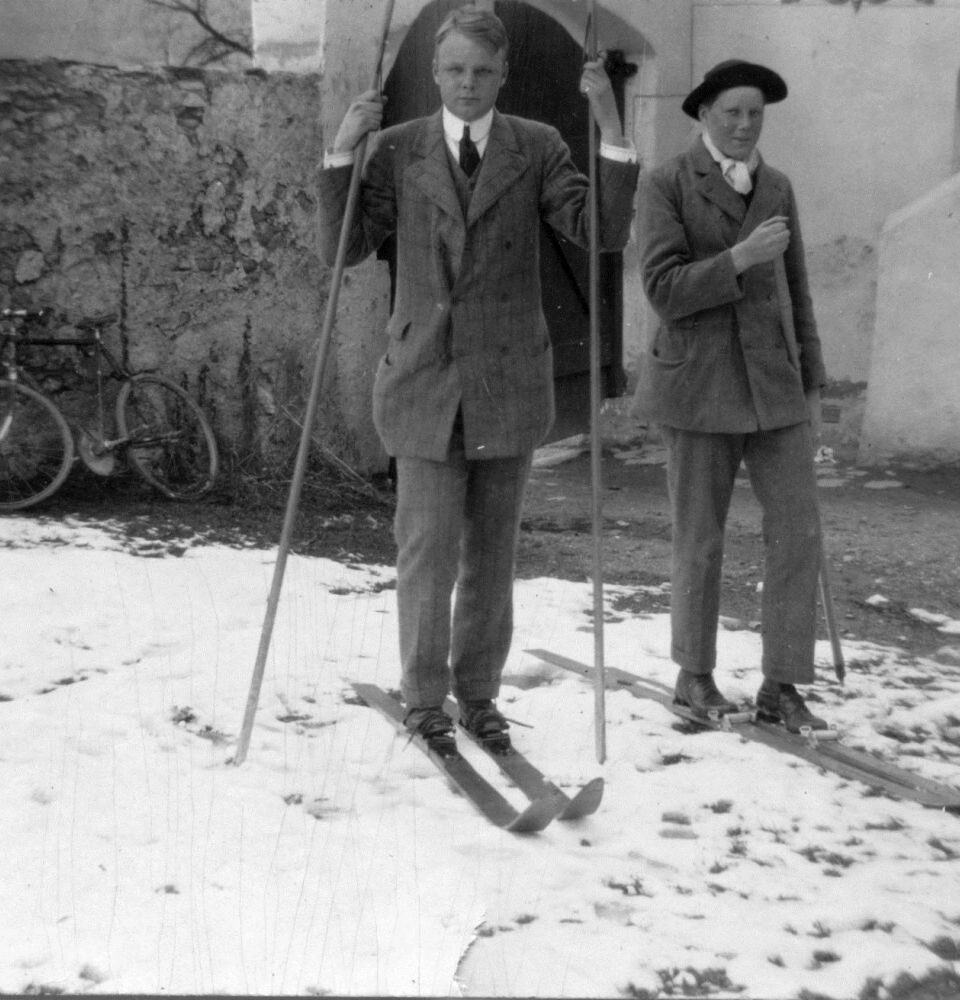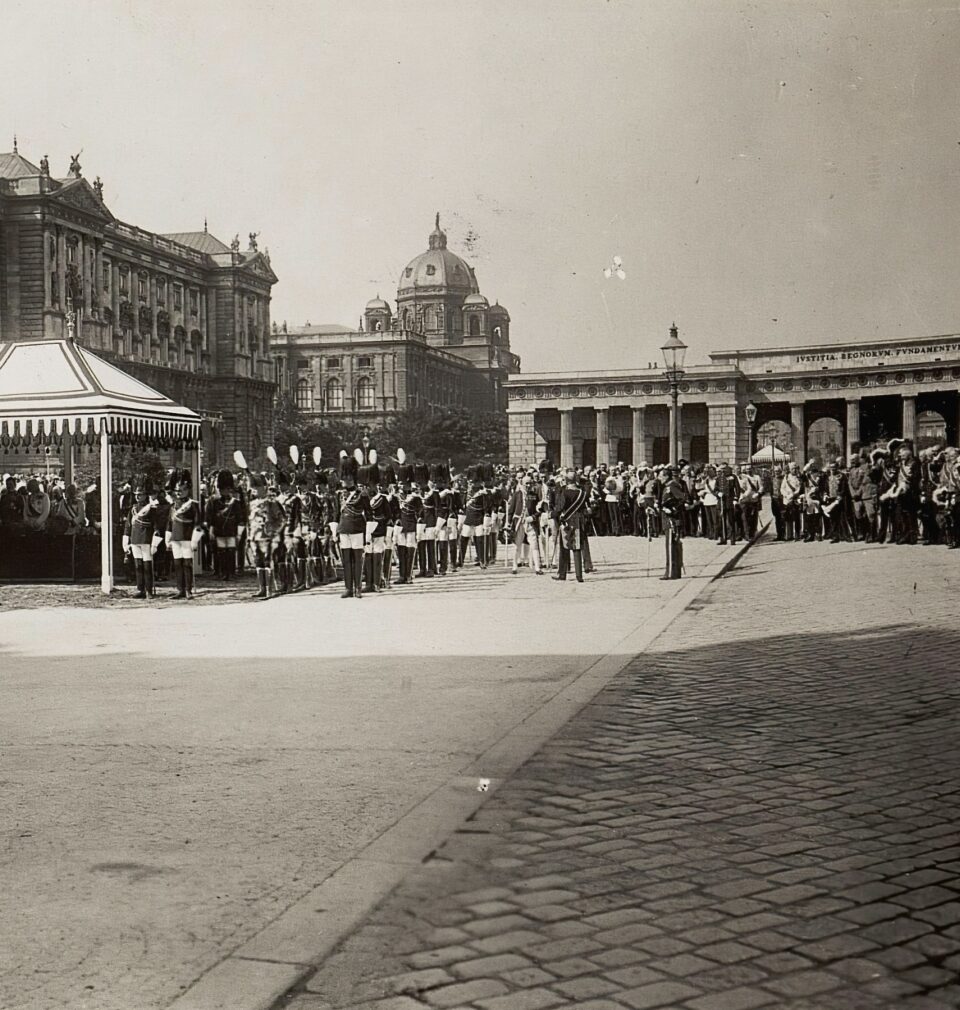
Austria
Nation-building in the snow
Publication: 3 March 2023
TAGS FOR THE ARTICLE
TO THE LIST OF ARTICLESSport could be used as an ideal binding element for the new state and its authorities did everything possible to suppress the bloody conflicts of the First Republic and the fascination with Germanness.
Winter 2020/21. The theatres and concert halls of “well-cultured” Austria remain closed, the ski slopes are opened. The “coronavirus crisis” made the priorities abundantly visible. The Rabenhof-Theater on Wiener Erdberg quickly understood that to enable a legal cultural experience and keep its doors open, it had to present itself as the “Erdberger Alpen ski resort”.
As the decision-making authorities claim that across the closed spaces the infections are more likely to spread, while across open spaces it is much less likely, the images of masses in the ski resorts, of crowds standing close together in front of the cash registers and gondolas speak quite a different language. Despite the catastrophe in Ischgl, where half of Europe was infected in Après-Ski, the ski lifts’ managers still have a lot to say. And they can find common understanding, after all, skiing is one of the essential elements of native Austrian identity. There is some history to forging the latter.
On 29 January 1956, in the snow of the Dolomite slopes around Cortina d’Ampezzo began the accelerated building of Austrian national identity. At the Olympic Winter Games, twenty-year-old Toni Sailer from Kitzbühel won the giant slalom, six seconds ahead of his teammates Anderl Molterer and Walter Schuster. As a tribute, three red-white-red flags fluttered while the hymn Land of the Mountains rang out. Two days later Sailer won the slalom – with the start number 135, because he had forgotten to take his real one, the 15, from his hotel. The all-round alpine triumph was completed on 3 February. “The Black Lightning from Kitz” rushed down the Tofana at a hundred kilometres per hour. At the difficult point under the little hayloft, where some of his competitors had fallen, his boards tore apart into a big V, which he tried to correct as he won the Olympic gold medal in the downhill, as well as the world championship title in combination with the “ideal zero note”. Winning all races under the sign of the Five Rings is considered a unique, unbeatable sports achievement.
The official report of the games proclaimed that the Austrian ski team was undoubtedly the strongest in the world and the dashing Toni Sailer was “a splendid young athlete, always smiling and hassle-free”. The newspaper “Neues Österreich” emphasised: “It seems to us of particular importance that this red-white-red triumph was achieved in sport.” The local politicians joined in the cheers. At the reception in Innsbruck the governor said: “With every new victory here in the homeland, the pride of being Tyrolean and Austrian awakens.” The national emotional engine ran at full speed. Tens of thousands were waiting for the “Golden Toni” in Vienna, and the government welcomed them at the Westbahnhof. In the Hofburg, the Federal President told the Olympic team: “Stay good and nice athletes and brave Austrians.” In the same year, Toni Sailer received the Grand Decoration of Honor for Services to the Republic.
Eleven years after the end of the war, at the first major sporting event after the signing of the State Treaty, the brave Austrians were finally winners. In 1945, most of the people in the country felt they were losers, soon afterwards felt they were victims in the sense of the thesis promoted by the authorities. After the historical consciousness of the country broke down in trying to renounce the German Reich, the “White Wonder Team” made it possible to fixate emotions on what was now officially their own. It arose from a similar shared sense of achievement as in the FRG the “Miracle of Bern”, the German victory at the Football World Cup in 1954 (the fact that the Austrians came third here was criticised by the media and the home public as a defeat). The miracle discourse with its metaphysical security was supported by the innocent white, the pure image of the young heroes skiing. Their victories fit the republic’s building strategy perfectly. After eight years of the “Thousand Year Reich”, 950 years of Austria was celebrated in 1946 and at the same time the “Austrian Ski School” became a trademark by decree. The official Austrian ski curriculum has become a cultural asset. The educational institutions paid special attention to sport on two boards, and school ski courses were considered an important part of civic education.
Sport could be used as an ideal binding element for the new state and its authorities did everything possible to suppress the bloody conflicts of the First Republic and the fascination with Germanness. In 1956, half of the population didn’t refer to Austria as a nation; in 1964, only 15% saw it that way. The same year, 80% of people stated that they were interested in sport, most of them – almost 50% – confirmed that they were particularly interested in skiing; in football – 30%. Two large areas of the community were involved in the two most popular sports: the federal states and Vienna, the countryside and the city.
Skiing slipped perfectly into the new image of Austria. In the seemingly immaculate nature, it presented itself as free from political history. So it shone on the idyllic backdrop, which exhibited a connection between scenic and cultural peculiarities, national character and the idea of the state. In addition, the success of tourism advertising was able to deliver images of innocence and active leisure. Tourism began to visibly improve the economic balance of the republic; the newspapers said that the best export goods in the country are its ski instructors.
Toni Sailer’s golden image with the Olympic emblems shone over the whole world. The book market played a role as well, even as it helped repress the uncomfortable past, but this wasn’t discussed much. The autobiographical book “My Way to the Triple Olympic Victory”, published in 1956, was written by the former SS officer Karl Springenschmid, who organised the operation of burning books in Salzburg in 1938.
Toni Sailer was well able to represent an ideal of the state: his family was picture perfect, as “The Courier” showed them together at breakfast on 10 February 1956. You could read in the newspaper: “The Sailers lead a good family life”. A peaceful economic miracle in the name of the social peace of the grand coalition.
The media assigned the ski stars the role of mountain children – youthful and down-to-earth. The audience was familiar with the cliché from the homeland films. Within three years after the end of the war, despite the precarious supply situation, the thriving genre had alone put in the cinemas forty of these movies, and from 1955 to 1957 the Sisi trilogy was shot. After his early retirement from the slopes, Toni Sailer continued his career as an actor in the cinema. He had become the rebuilding myth incarnate; in 2000 he was voted Austria’s athlete of the century.
Twenty years after Sailer’s triumph in Cortina d’Ampezzo, the nation-building should experience a renewed impetus in the snow, this time on the slopes of the Patscherkofel above Innsbruck. The Tyrolean capital hosted the Winter Olympic Games in 1964 and thus practically demonstrated the common formula of Austria’s ‘bridge function’ between East and West during the Cold War. As a result, tourism and the ski industry experienced enormous growth. When Denver decided against the Olympics in 1976, Innsbruck stepped in. In the country, which the Bruno Kreisky government hailed as the “island of the blessed”, promises were made of major economic impulses and a consolidation of national feelings.
It needed victories for that. Franz Klammer, who dominated the alpine “supreme discipline”, downhill skiing, was the best guarantee for this – and Toni Sailer of the Austrian team as head coach could be seen as a signal that the glorious past was being built on. The Carinthian mountain farmer’s son – Klammer fit in the image of the nature boy destined for his success. The ORF broadcast the Games non-stop, for which it used three quarters of its annual budget.
When Klammer won the last race in Kitzbühel, Federal President Rudolf Kirchschläger held the award ceremony and on a banner everyone could read: “Innsbruck greets its Olympic champion Franz Klammer.” Fred Sinowatz, the Minister for Art and Education, but also sports, announced that he would go on foot to the Patscherkofel when the sportsman wins the Gold. And the Kronen Zeitung declared with patriotic zeal: “Why Franz Klammer is set to win gold”. At the opening ceremony the twenty-two-year-old carried the flag and the hopes of the whole ski nation.
On 5 February 1976 at lunchtime, the streets were completely empty. Schools let the kids go home, factories had extended their breaks, and offices had set up televisions.
Klammer’s biggest competitor, Bernhard Russi, started with number 3. The draughtsman from Switzerland looked almost sophisticated; four years earlier he had won the Olympic Downhill in Sapporo after the IOC under Avery Brundage had excluded the favourite Karl Schranz for a ridiculous violation of the amateur law.[1] Schranz was welcomed in Vienna on the balcony of the Federal Chancellery by a huge crowd, the largest demonstration since 1945, broadcast by ORF. The disqualified one as a hero: he fit to a T, and Austria knew the role of victim inside out.
Klammer against Russi, Austria – deprived of victory in 1972 – against injustice, the one close to nature against the cosmopolitan, this is how a narrative of contrasts presented itself on the slopes of the Patscherkofel, which set the collective emotional work in motion.
Klammer was wearing the number 15 as the last starter in the strongest group. In 1:46.06 Russi had an almost perfect run. In the upper part, the Carinthian made a small mistake, in the meantime he was behind. He drove a wild line, doing what he could to beat his rival. The whole Austria hoped to see a 5 light up behind the 4. 1:45.73 – Franz Klammer was Olympic champion, with him the whole nation.
In 1977 only 11% of the people in the country didn’t identify with the Austrian nation. And in 1983, 93% said they were very or fairly proud of Austria. In the first place, they appreciated sport, especially the successes on the white slopes. In the mid-eighties, every second person in the country regularly stood on the slopes, and Wolfgang Ambros’ “Schifoan”[2] became a de facto national anthem.
In February 2015 there was a survey conducted where people were asked about the personality that represents Austria best abroad. The skier Marcel Hirscher, who was also the greatest advertising medium of the whole republic, took the first place. The priorities became clear when the ORF broadcast the press conference of Marcel Hirscher, at which he announced his withdrawal from the ski scene, in the main evening program in September 2019, and when the prime-time TV programme led with this news before moving to the National Council election. “In a nation for which winter sport was a defining element of identity after the war, a ski king stands above the Chancellor,” wrote “Der Standard”.
Translated from the German by Justyna Sarna
[1] With the regulations in force then, each sportsperson who benefited from advertising contracts and treated sport as a means of income was automatically barred from taking part in the Olympics.
[2] Ski pop sensation from the 1970s quickly won the Austrians’ hearts in après-ski bars and discos across the alpine resorts, becoming the Austrian anthem of winter sports.
Similar articles
Copyright © Herito 2020


